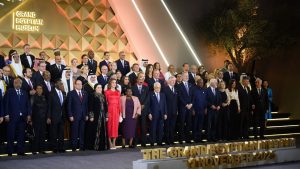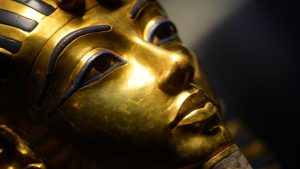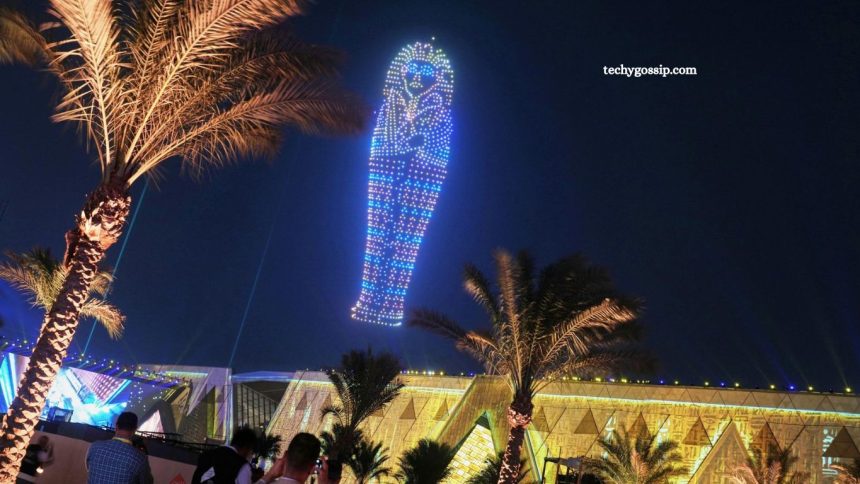The Grand Egyptian Museum (GEM) in Giza, two decades in the making and covering 500,000 square metres, offers immersive exhibits and virtual-reality experiences, replacing the cluttered displays of Cairo’s century-old Egyptian Museum.
World leaders, including monarchs and heads of state, attended the inauguration of the $1 billion museum, which houses over 50,000 artifacts showcasing life in ancient Egypt. GEM is the largest museum in the world dedicated to an ancient civilization and aims to boost tourism and Egypt’s economy.
The opening ceremony featured fireworks and a drone light show depicting ancient gods and the pyramids. Dignitaries included Egyptian President Abdel Fattah al-Sisi, Spain’s King Felipe, Germany’s President Frank-Walter Steinmeier, Dutch Prime Minister Dick Schoof, Hungarian Prime Minister Viktor Orban, and Palestinian Authority President Mahmoud Abbas.
President al-Sisi called on attendees to “make this museum a platform for dialogue, a destination for knowledge, a forum for humanity, and a beacon for all who love life and believe in the value of humankind.”

The whole collection of Tutankhamun’s treasures
Located near the Giza Pyramids and the Sphinx, the Grand Egyptian Museum will, for the first time since 1922, display the complete collection of treasures from King Tutankhamun’s tomb.

Read More: White House Reveals Details of China Trade Truce
Why was the museum delayed?
Construction of the Grand Egyptian Museum began in 2005 under President Hosni Mubarak to replace the overcrowded and disorganized Egyptian Museum. Progress was halted by the 2011 Arab Spring uprising, which toppled Mubarak, and further delayed by subsequent challenges, including a planned summer opening postponed due to the 12-day war between Israel and Iran in June.
The museum, hailed by President Abdel Fattah al-Sisi’s office as “an exceptional event in the history of human culture and civilisation,” is part of a series of megaprojects aimed at reviving Egypt’s economy through massive infrastructure and cultural investments since 2014.
If you want, I can also create a shorter, punchy version under 100 words suitable for a news article or SEO snippet.

Millions set to visit the museum each year
The Grand Egyptian Museum is expected to draw around five million visitors annually, rivaling major global institutions such as Paris’s Louvre (8.7 million in 2024), the British Museum (6.5 million), and New York’s Metropolitan Museum of Art (5.7 million).

GEM’s 12 main galleries, opened last year, showcase antiquities from prehistoric times through the Roman era, organized by period and theme. Two new halls unveiled at the grand opening display 5,000 artifacts from King Tutankhamun’s tomb, including his three funeral beds, six chariots, golden throne, sarcophagus, and burial mask crafted from gold, quartzite, lapis lazuli, and colored glass.
Discovered in 1922 by British archaeologist Howard Carter in Luxor, the boy pharaoh’s treasures were previously scattered or displayed abroad due to space limitations at the old Egyptian Museum. GEM opens to the public this Tuesday.
Frequently Asked Questions
Where is the Grand Egyptian Museum located?
Near the Giza Pyramids and the Sphinx in Giza, Egypt.
When did the Grand Egyptian Museum open?
The museum opened to the public in November 2025.
What makes the Grand Egyptian Museum unique?
It houses over 50,000 artifacts, including the complete treasures of King Tutankhamun, in immersive exhibits.
How large is the museum?
GEM spans 500,000 square metres, making it the largest museum dedicated to an ancient civilization.
How many visitors does the museum expect annually?
Around five million visitors per year.
What can visitors see at the museum?
Antiquities from prehistoric times to the Roman era, plus immersive displays and VR experiences.
Why was the museum delayed?
Construction was interrupted by the 2011 Arab Spring, political turmoil, and other regional events.
Conclusion
The Grand Egyptian Museum marks a historic milestone for Egypt, combining cutting-edge exhibits with the world’s most complete collection of King Tutankhamun treasures. Positioned near the iconic Giza Pyramids, GEM is set to become a global cultural destination, attracting millions of visitors each year while celebrating Egypt’s rich heritage and boosting tourism and the economy.







